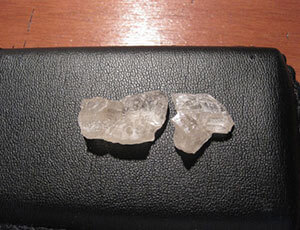What is Molly?
Molly, short for molecule, is the powder or crystal form of MDMA, the chemical used in making ecstasy. MDMA acts as both a stimulant and psychedelic.
Molly is considered a “club drug.” Young people are often exposed to this substance at bars, concerts, raves and parties. References to this drug are frequently heard in popular music. A 2014 Substance Abuse and Mental Health Services (SAMHSA) Drug Abuse Warning Network (DAWN) report claims emergency room visits involving ecstasy and patients younger than 21 rose 128% from 2011.
How is Molly abused?
Molly is generally ingested in capsule, powder or crystal form. It is sometimes snorted. Molly is often taken in a party setting where it is common for teenagers to combine the drug with alcohol, marijuana or prescription drugs, increasing toxicity.
How does Molly affect a person?
It usually takes 30 minutes to an hour for Molly to take effect. The high generally lasts about three to four hours. However, the onset and duration of this high varies according to the dosage taken. One of the dangers of Molly use is an inability to effectively judge the amount of MDMA, or additional substances, delivered via unregulated and illegal distribution.
Users experience decreased inhibitions, distortions in time and euphoric effects. Increased energy, perceptions of touch, feelings of trust, sexual desire and alertness are also produced. Molly causes some users to feel dizzy, anxious, chilly, agitated or sweaty.
What are the health effects/risks of using Molly?
Adverse physical effects may include muscle cramps, tremors, involuntary teeth clenching, dehydration, nausea, faintness, chills, sweating, increased heart rate, elevated blood pressure, severe dehydration and blurred vision. The most severe reactions to Molly often occur when a teen is “bumping.” The practice of bumping is defined by frequent Molly use or taking multiple doses at one time.
Molly interferes with metabolism and the body’s ability to regulate temperature. High doses of Molly can result in sharp increases in body temperature leading to hyperthermia. Physical activities such as dancing in a club environment may further increase body temperatures. Hyperthermia can lead to seizures, liver failure, kidney failure, heart failure or death.
Lingering effects of Molly use can include anxiety, depression and sleep disorders.
